mobile View, to the German Version tap the flag


- Federal country of the German Empire
- to 1918 as Kingdom of Prussia
- 1920–1947 as Free State of Prussia
- 1947 dissolved
• Flags
• historical Flags
• Meaning/Origin of the Flag
• Coat of Arms
• Meaning/Origin of the Coat of Arms
• Cockade
• Map
• Numbers and Facts
• Provinces
• History
• Origin of the Country's Name
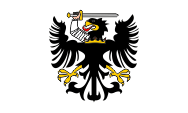
1466–1772,
Royal Polish Prussia,
Source, by: Snamjena Germanii



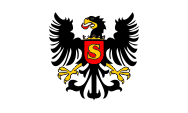
1525–1657,
Flag of the Duchy of Prussia as a fief of the King of Poland,
Source, by: Snamjena Germanii





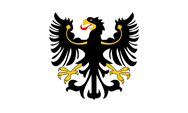
1657–1701,
Flag of the Duchy of Prussia,
Source, by: World Statesmen



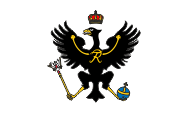
1701–ca.1750,
Flag of the Kingdom of Prussia,
Source, by: World Statesmen, Snamjena Germanii




since 1701,
Colours of the country,
Source, by: Flags of the World



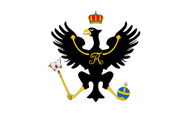
ca.1750–1801,
Flag of the Kingdom of Prussia,
Source, by: Flags of the World



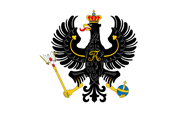
1801–1816,
Flag of the Kingdom of Prussia,
Source, by: Flags of the World, Snamjena Germanii




1818–1823,
Merchant flag,
Source, by: Flags of the World



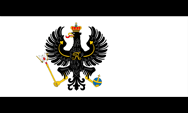
1823–1892,
National and merchant flag (ashore?),
Source, by: Flags of the World,
Flaggen aller Seefahrenden Nationen,
Deutsche Wappen Rolle



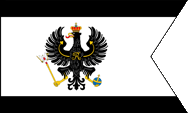
1823–1892,
National and merchant flag (offshore?),
Source, by: Flags of the World,
Flaggen aller Seefahrenden Nationen,
Deutsche Wappen Rolle



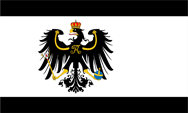
1892–1918,
National and merchant flag (ashore?),
Source, by: Flags of the World,
Flaggen aller Seefahrenden Nationen,
Deutsche Wappen Rolle





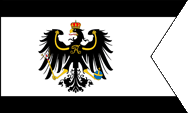
1892–1918,
National and merchant flag (offshore?),
Source, by: Flags of the World,
Flaggen aller Seefahrenden Nationen,
Deutsche Wappen Rolle



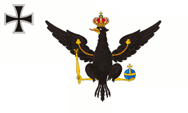
1816–ca.1818,
War flag,
Source, by: Meuß: Die Geschichte der preußischen Flagge, 1916



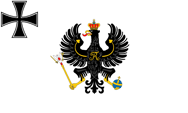
ca.1818–1892,
State and war flag (ashore?),
Source, by:
Flags of the World,
Flaggen aller Seefahrenden Nationen,
Deutsche Wappen Rolle



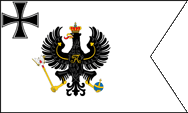
ca.1818–1892,
State and war flag (offshore?),
Source, by:
Flags of the World,
Flaggen aller Seefahrenden Nationen,
Deutsche Wappen Rolle



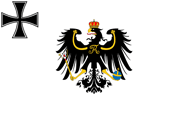
1892–1918,
State and war flag (de facto),
Source, by:
Flags of the World,
Deutsche Wappen Rolle





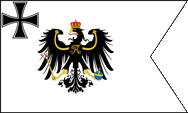
1892–1918,
State and war flag (official),
Source, by:
Flags of the World,
Deutsche Wappen Rolle



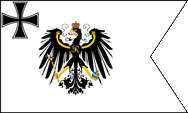
1903–1918,
Masthead flag HMS Preußen,
Source, by:
Wikipedia (D)



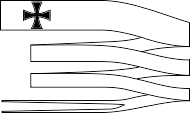
1858–1867,
War Pennant,
Source, by:
Flags of the World
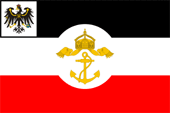
1894–1921,
Official flag offshore,
ratio – ratio = 2:3,
Source, by:
Wikipedia (D)



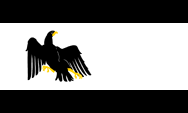
1922–1933,
State flag and official flag offshore,
Source, by:
Wikipedia (D)





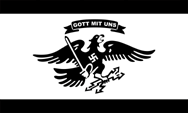
1933–1935,
official flag,
Source, by: Uniform-Fibel



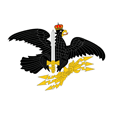
ca.1805–ca.1842,
Standard of the king,
Source, by: Flags of the World, Snamjena Germanii



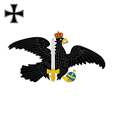
ca.1842–1844,
Standard of the king,
Source, by: Flags of the World, Snamjena Germanii



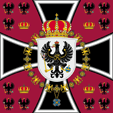
1844–1871,
Standard of the king,
Source, by: Flags of the World, Snamjena Germanii



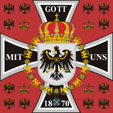
1871–1918,
Standard of the king,
Source, by: Flags of the World, Snamjena Germanii



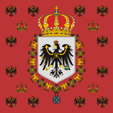
1871–1918,
Standard of the queen,
Source, by: Flags of the World, Snamjena Germanii



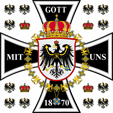
1871–1918,
Standard of the crown prince,
Source, by: Flags of the World, Snamjena Germanii




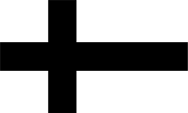
Flag of the Teutonic Order (teutonic knights)



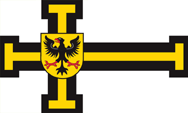
Flag of the High-Master of the Teutonic Order (teutonic knights)




The history of the flag of Prussia is very complex. The always black-and-white flags oftenly changed the design and have been manufactured with or without a swallowtail from the beginning of the 19th century, probably depending on whether they were used on land or at sea, but this was not consistently adhered to anyway, because the swallowtail flags were not so stable in the wind and tear in quickly. The Prussian eagle was almost always visible, and after the wars of liberation against Napoleon the Iron Cross was added on military and official flags. The colors black and white go back to the coat of arms, which shows a black eagle on a white (silver) background.
In the beginning, from the 16th century onwards, the flags were basically made as scutcheon-flags and showed, like the coat of arms, the eagle on a white background. Later came the need to define black and white as colors of the country (Landesfarben), which happened at the latest from 1701 (Prussia becomes kingdom), which became important for medal ribbon and cords of documents and were also intended for decoration purposes. Thus it was possible to direct the identification of the citizen not only to the monarch but also to the country and to give him the opportunity to recognize and also express his identity as a Prussian without use of the heraldic symbolism which is reserved for the king or royal offices, authorities or for the army.
On 22nd of May in 1818 was introduced a black-white-black striped flag as merchant flag, that could be used by ordinary citizens at sea. In addition, the name of the home port was allowed in the white stripe. This flag was replaced on 12th of March in 1823 by another model, its stripes were now showed in a ratio of 1:5:1 and the broad white stripe showed the Prussian eagle in the middle. Until 1863 it was additionally equipped with a swallowtail for use at sea. On land it was allowed for inner German embassies and consulates to use the flag. With the establishment of the North German Confederation, with its uniform merchant flag for all member states, a separate Prussian merchant flag was actually no longer necessary, but it was retained nominally and was called "national and merchant flag".
The naval and war flag was single-coloured white and showed the iron cross in the upper corner and the Prussian eagle in the middle of the flag. In the Imperial Navy, the flag had a swallowtail. From 1867 onwards, with the establishment of the North German Confederation and its Federal Navy (even if they were only Prussian ships), it was no longer necessary to have a Prussian naval flag. The same was true for the Imperial Navy of the German Empire (from 1872). Nevertheless, the Prussian naval flag was revived in 1903, namely as masthead flag of the battleship HMS "Prussia", but it showed the imperial eagle instead of the Prussian eagle. With the establishment of the North German Confederation was formed a Federal Army, which was called "Imperial Army" from 1871. War flags were here also no longer necessary for the individual German states, even if Bavaria, Saxony and Wuerttemberg had a special status. The German states provided contingents that they organized and administered themselves, but were only subordinated to the emperor, at least in the event of war. Nevertheless, the war flag remained important because it became the state flag, so to say, the use of which was reserved for offices and authorities, provided that they did not have their own flags. It was allowed by cabinet order from 6th of July in 1863 to use the flag as follows: from all ships of the Prussian military administration, in the area of inland navigation, on all Prussian state buildings (except buildings of sea shipping), from all yachts, boats and properties of the royal house, from all fortresses and forts. It was also allowed to be used (like the merchant flag) by inner German embassies and consulates. The eagle received a new design on 8th of November in 1892. These regulations were officially maintained until the end of the Kingdom of Prussia in November 1918, but at least until the introduction of the new Prussian flag on 5th of July in 1922.
One break in the history of the flag of Prussia was the abolition of the monarchy in the year 1918, which manifested itself by a change in the appearance of the flag in 1922. The new design, with the unheraldic, oblique, soaring Eagle was determined on 24th of February in 1922 and was introduced on 5th of July in 1922.
The standard of the king, as his personal flag, was introduced around the time when they began to specialize flags for various purposes, such as the introduction of the war flag. It is noticeable that the standard of the king shows indeed the heraldry of Prussia, the black eagle on white, but until the introduction of a completely new design around 1848, the eagle always keeps a sword in the catch and possibly also a bundle of lightnings. It is not the eagle from the coat of arms, where he holds the scepter and orb on the left and right, it is a peculiarity, the soaring unheraldic eagle. Together with the motto "Pro Gloria et Patria" it is the symbol of the Prussian army, whose commander in chief the king was. With the achievement of the imperial dignity in 1871, the royal standard was also renewed. The basic color changed from purple to red and the saying "Gott mit uns" ("God with us") and the year "1870" were added to the iron cross. This motto has been the motto of the royal family since 1701, the year is probably a reference to the war-decisive battle of Sedan.
Another important event for the flags of Prussia was the seizure of power by the National Socialists in the German Empire in 1933. In the same year, on 2nd of October in 1933, the in 1922 introduced flag was abolished and replaced by a new one. The flying eagle was retained in a modified form, but completed by sword, arrow bundle and swastika. For the National Socialists, the federal structure of the German Empire, its historically grown countries, was considered as outdated, as relics of a past to be overcome. In this sense, several laws were enacted, on 31st of March in 1933 the 'Provisional Law for the phasing of the countries with the Empire', on 7th of April 1933 the 'Second Law for the phasing of the countries with the Empire' and finally, on 30th January in 1934 the 'Law on the rebuilding of the empire'. Thus, the federal structure of the German Empire was replaced by the gau-structure of the NSDAP, the countries became meaningless. From now on, offices and authorities had to use the swastika flag as official flag, until September 15th in 1935, when by the flag-law was legislated a new created official flag for all the offices and authorities of the empire. The prime ministers of the countries, which latest in 1933 all came from the NSDAP – now mostly called Reichsstatthalter (maybe translated as 'governor') – however remained in office until 1945. This was then also applied on the provinces of the state of Prussia. Their sovereign duties were taken over by the Gau structure of the NSDAP, which sometimes coincided with the borders of the provinces and sometimes they were new created. The respective provincial flags disappeared. The corresponding country colours continued, with restrictions, but definitly not in the form of flags. They were used, for example, occasionally on uniforms of the SA or in some ranks of the Hitler Youth in the breast cord. However, on initiative of the Prussian Prime Minister Hermann Göring the Prussian flag was abolished not until 31st of October in 1935.
After the war, the administration within the German Empire was rebuilt, but locally, following the structure of the countries. These have been partly old countries, and some new countries were created. Sometimes they bethought the old country colours and reactivated them – or they created new ones – for limited sovereign duties, which were under the control of the Allies. With the founding of the FRG and the GDR, an internal country-structure was finalised for both entities and corresponding official flags were introduced for these countries. However, the eastern parts of Prussia were occupied by Soviet troops from 1944, and most of them came under Polish or Russian administration. The process described above did not come into being the German population was forcibly expelled, Prussia had been abolished in 1947 by the Allies and the old flags no longer played a role.
Source:
Volker Preuß,
Jürgen Kaltschmitt,
Uniform-Fibel,
Deutsche Wappen Rolle

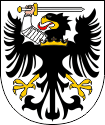
1466–1772,
Coat of arms of Royal Polish Prussia,
Source, by: Snamjena Germanii
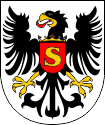
1525–1657,
Coat of arms of the Duchy of Prussia as a fief of the King of Poland,
Source, by: Snamjena Germanii
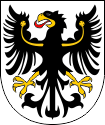
1657–1701,
Coat of arms of the Duchy of Prussia,
Source, by: World Statesmen
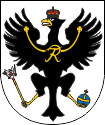
1701–1750,
Coat of arms of the Kingdom of Prussia,
Source, by: World Statesmen, Snamjena Germanii
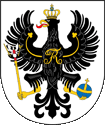
1750–1892,
Coat of arms of the Kingdom of Prussia,
Source, by:
Flags of the World, Snamjena Germanii
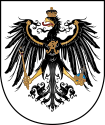
1892–1922,
lesser coat of arms of Prussia,
Source, by: David Liuzzo [Attribution], via Wikimedia Commons
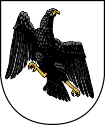
1922–1933,
Coat of arms of Prussia,
Source, by: By R-41 (Own work) [Public domain], via Wikimedia Commons
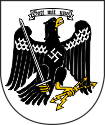
1933–1934/35,
Coat of arms of Prussia,
Source, by:
By TRAJAN 117This vector image was created with Inkscape. (Own work) [GFDL or CC BY-SA 3.0], via Wikimedia Commons

The origins of the Prussian heraldry can be found in Royal Polish Prussia when these areas (Pomerelia [later West Prussia], Kulm Land, Marienburg and Elbing) were ceded to the Kingdom of Poland in 1466 and became a fief of the Polish king. A coat of arms was created for this country. It showed the Polish eagle in black on a silver (white) background with a sword arm. The colors were probably not chosen at random, after all, the Royal Polish Prussia was previously a territory of the Teutonic Order, the colors of the order were black and white (black cross on a white background). In 1525, Grand Master Albrecht converted the remaining State of the Teutonic Order (in principle the area of what would later become East Prussia, but without the Diocese of Warmia) into the secular Duchy of Prussia, Albrecht became the duke and swore the oath of fief to the Polish king. Another coat of arms was created for this, again according to the same principles. It showed the Polish eagle in black on a silver (white) background and it had a crowned breastplate with the initial "S" of the Polish king Sigismund. The coat of arms of Prussia was thus created. Later, when Prussia was divided into provinces, this original Prussian coat of arms became the coat of arms of the province of East Prussia, but without the breastplate with the "S", which had already become obsolete in 1557 when the Polish feudal sovereignty ceased to exist. On the occasion of the Polish divisions, Prussia was able to gain Royal Polish Prussia in 1772. Its coat of arms (the eagle with the sword arm) was adopted for the later province of West Prussia.
The coat of arms with the black eagle on white background has been retained over the centuries, but always differently reproduced in details. Thus, probably from that time on when the Polish fief-sovereignty ended (1657), golden clover stems were placed on the eagle's chest and his chest was adorned with the golden initials "FR", a monogram that goes back to King Frederick I. (Friedrich I.), what means "Friedericus Rex". The name Friedrich as the name of the Prussian king appeared again and again until the 19th century, so this practice was retained. Probably at the latest with Friedrich Wilhelm IV. This practice seems to have been suspended on flags sometimes, perhaps to simplify the reproduction of the eagle on flags. This also affected to the clover stems. The Prussian eagle in the coat of arms always wore clover stems, monogram, scepter and orb, at least from the time of King Friedrich I. on.
Source:
Volker Preuß,
Deutsche Wappen Rolle,
www.heraldique.org


to 1919,
Cockade of Prussia,
Source: by: www.altearmee.de

Read here:
Informations, history and facts about the theme "Cockades".

Cockade

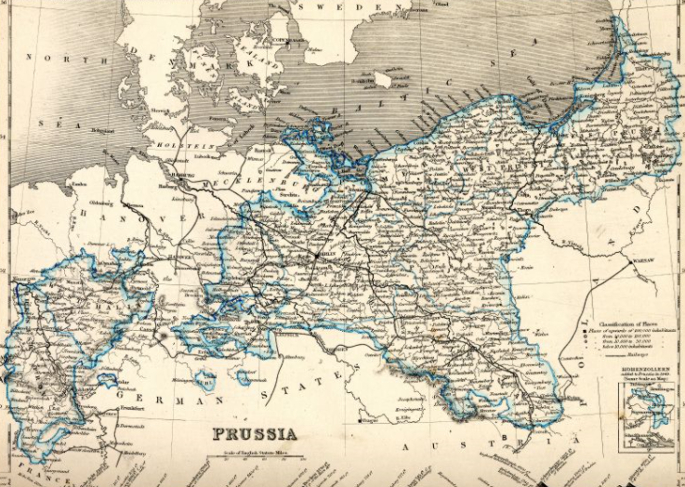
Source:
Milner's Descriptive Atlas
The historical map shows Prussia around 1850 outlined in light blue.

Area: 112.625 square miles (1925)
Inhabitants: 38.120.173 (1925)
Density of Population: 338 inh./sq.mi. (1925)
Capital: Berlin, 4.024.000 inh. (1925)
Currency to 1875: 1 Taler = 30 Silbergroschen = 360 Pfennig
Currency 1875–1924: 1 Mark = 100 Pfennig
Currency 1924–1947: 1 Reichsmark (RM) = 100 Reichspfennig (Rpf.)
Source: www.gonschior.de,
Der Michel

Clickable map:
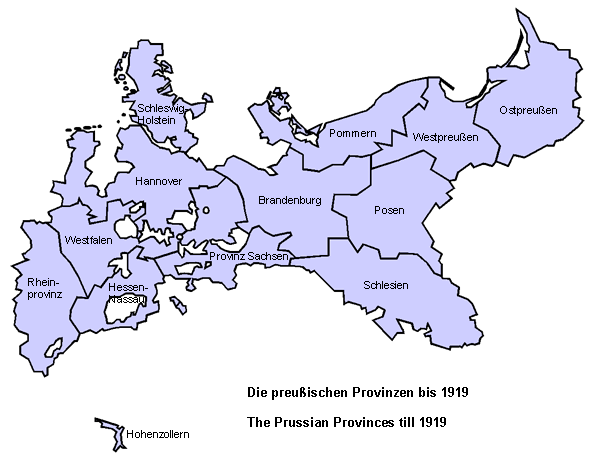
Source:
Volker Preuß
Clickable map:
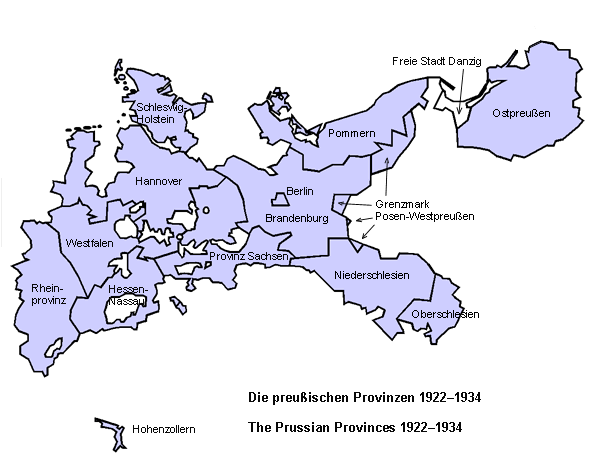
Source:
Volker Preuß
The provinces of Prussia in alphabetical order:
• Town of Berlin
• Brandenburg
• Border Province of Posen-West Prussia
• Hanover
• Hesse-Nassau
• East Prussia
• Pomerania
• Posen
• Province of Saxony
• Rhine Province
• Silesia
– Upper Silesia
– Lower Silesia
• Schleswig-Holstein
• Westfalia
• West Prussia
• Governmental District of Hohenzollern

1230 · the Order of the Teutonic Knights acquires Kulmerland on Weichsel River
1410 · defeat of the Order in the Battle of Tannenberg
1411 · Friedrich VI. of Hohenzollen is appointed by King Sigismund to the acting head of the Mark Brandenburg
1466 · Second Peace of Thorn, loss of territories to Poland (Pomerelia [the later West Prussia], Kulm Land, Marienburg, Elbing, Ermland [Warmia], summarized as royal Polish Prussia), the Order must accept the suzerainty of the Polish king
1511 · election of Albrecht of Hohenzollern to Grand Master of the Teutonic Order
1522 · Albrecht converted to the Protestant confession
1525 · Grand Master Albrecht changes the State of the Order into the secular Duchy of Prussia, Albrecht becomes the Duke, Albrecht swears the oath of fiefdom to the Polish king
1549 · purchase of territories on the Rhine (Jülich-Cleve-Berg)
1563 · Investiture with the possessions of the Brandenburg's Hohenzollern
1618 · Elector Joachim Friedrich of Brandenburg inherits the Duchy of Prussia
1621 · acquisition of Brandenburg
1648 · acquisition of Pomerania
1656 and 1660 · contracts Wehlau and Oliva (repeal of the Polish suzerainty)
1675 · victory over Swedish troops at Fehrbellin
18th of January in 1701 · Elector Friedrich III. crowns himself in Koenigsberg to "King in Prussia"
1713–1740 · King Friedrich Wilhelm I. reformes the Prussian State
1740–1786 · King Friedrich II. continues the reforms, war against Austria and Russia, Prussia wins Silesia
1772–1795 · Polish Divisions, Prussia acquires West Prussia and Posen
1806 · battles of Jena and Auerstedt, defeat of Prussia against French forces under Napoleon
1807 · Peace of Tilsit, Prussia loses all areas west of the Elbe River and the profits from the Polish Divisions
1807–1812 · reforms in Prussia (Stein, Hardenberg, Gneisenau, Humboldt)
1812–1815 · Liberation War against Napoleon under the leadership of Prussia
1815 · Congress of Vienna, Prussia gets back the areas in the west of Elbe River and acquires the later Rhine Province, joins the German Confederation and becomes the leading power in Germany
1834 · founding of the German Customs Union
1848–1849 · bourgeois Revolution in Germany, King Friedrich Wilhelm IV. rejects the offered crown of the empire, the revolution is defeated
1864 · German-Danish War (Prussia and Austria against Denmark)
1866 · Prussian-Austrian War, or German War or Fratricidal War, defeat of Austria and its allies against Prussia and its allies, Prussia acquires Schleswig-Holstein, Hanover, Electoral Hesse and Nassau, destroyes the German Confederation and operates the establishment of the North German Confederation
1870–1871 · German-French War, defeat of France, founding of the German Empire, King of Prussia, Wilhelm I., becomes German emperor, Otto von Bismarck becomes Chancellor
1888 · death of William I. and of his successor Friedrich III., Wilhelm II. becomes King of Prussia and German Emperor
1914–1918 · First World War, defeat of the German Empire, November Revolution, Wilhelm II. retreates, the German Empire becomes a republic
28th of June in 1919 · Versailles Dictate
1st of January in 1920 · coming into force of the Versailles Dictate, big loss of territory for Prussia, astronomical reparations to the German Empire
30th of November 1920 · new constitution for Prussia, Prussia becomes a democratical and parliamentary Free State under Prime Minister Otto Braun
1932–1933 · "Prussian Coup", Franz von Papen eliminates the democratic government in Prussia
1933–1934 · Prussia cedes (like all German states) its exclusive pilitical rights to the government of the empire, the territorial structure of the German Empire countries become replaced by the Gau structure of the NSDAP, the countries become meaningless, finally on 30th January in 1934 by the 'Law on the rebuilding of the empire'
1939–1945 · Second World War, defeat of the German Empire, Prussia becomes occupied by Soviet Union in the east and by British-American troops in the west
1945–1947 · Prussian territories become torned piece by piece from the country and added to other and some newly created countries
25th of February in 1947 · Prussia becomes dissolved by Act No. 46 of the Allied Control Council
1945–1949 · the territories of Prussia east of Oder River and Neisse River become occupied by Poland, the Koenigsberg Region (Kaliningrad) comes to the Soviet Union, expulsion of 8,5 million Germans from their home countries, 2,8 million of them becoe killed or die during escape and expulsion
Source:
Atlas zur Geschichte,
Wikipedia (D),
World Statesmen,
Deutschlands Gebietsverluste,
Jürgen Kaltschmitt

The name of the country Prussia goes back to the Old Prussian people who lived in the area of East Prussia in the early Middle Ages.
Source: Volker Preuß






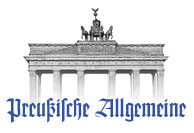
Preußische Allgemeine Zeitung
Die Fundgrube für Geschichtsbegeisterte. Mit sehr großem kostenlosen Archiv mit den kompletten Ausgaben dieser Zeitung mit sehr interessanten Artikeln über die preußische Geschichte.

![]()










































































































